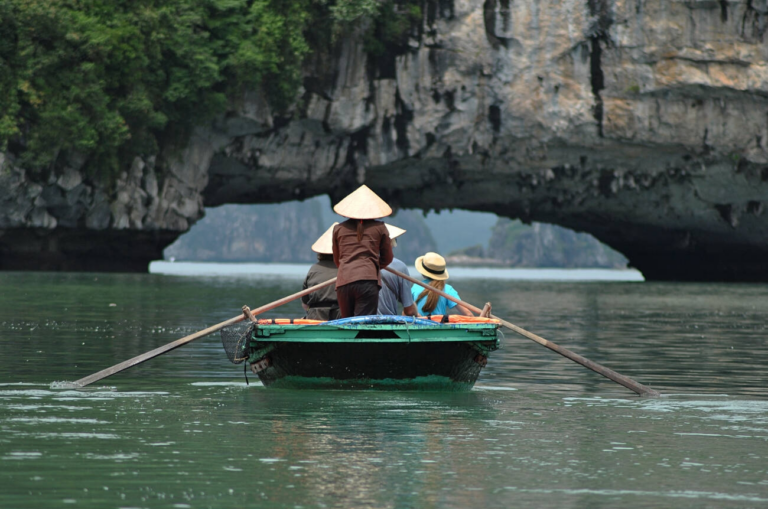
Kanhoji
Kanhoji Angre, born in 1669 in the village of Angarwadi in the Konkan region of Maharashtra, India, was a formidable Maratha naval commander whose contributions have often been overshadowed in mainstream historical narratives. Born into a family with a strong naval tradition, Kanhoji was destined to follow in the footsteps of his ancestors, who had served the Maratha Empire’s navy with distinction. His father, Tukoji, was a commander in the Maratha navy, and from an early age, Kanhoji was groomed for a life at sea.
Rise to Prominence
Kanhoji’s rise to prominence began under the leadership of Chhatrapati Shivaji Maharaj, the founder of the Maratha Empire. After Shivaji’s death, Kanhoji continued to serve under his successors, Sambhaji and Rajaram. His expertise in naval warfare and his strategic acumen earned him the title of “Sarkhel” (Admiral) of the Maratha Navy. Kanhoji’s deep understanding of the Konkan coast and its intricate waterways allowed him to effectively protect the Maratha territories from foreign incursions, particularly from European colonial powers.
Successful Defense and Raids
From 1707 to 1729, Kanhoji Angre captured more than fifty European trading ships. His most famous victory came in 1721 when he captured the British ship “Success” and held its crew for ransom. This daring act showcased his strategic brilliance and established him as a significant threat to European colonial interests in India.
The Capture of the British Ship “Success”
The capture of the “Success” was a pivotal moment in Kanhoji Angre’s career and demonstrated his formidable naval prowess. The “Success” was a well-armed British merchant ship, part of the East India Company’s fleet, which had been a symbol of British maritime strength in the Indian Ocean.
In 1721, the “Success” was sailing off the coast of Maharashtra when it encountered Kanhoji Angre’s fleet. Utilising his deep knowledge of the coastal waters, Kanhoji executed a surprise attack. His fleet of smaller, more manoeuvrable vessels quickly encircled the “Success,” cutting off any chance of escape. Despite the British crew’s attempts to fend off the attackers, they were overwhelmed by Kanhoji’s forces.
The capture of the “Success” was not just a tactical victory; it was a psychological blow to the British East India Company. By seizing one of their prized vessels, Kanhoji sent a clear message about the strength and capability of the Maratha navy. He held the crew for ransom, a common practice at the time, which forced the British to negotiate and pay a hefty sum for their release. This incident significantly boosted Kanhoji’s reputation and instilled fear among European traders and colonial powers operating in the region.
Kanhoji Angre’s success in capturing the “Success” and other European ships can be attributed to his tactical brilliance and innovative naval strategies. He understood the limitations and strengths of his fleet and used them to his advantage. His ships were not as heavily armed as the European vessels, but they were faster and more agile, allowing for quick strikes and rapid retreats.
Kanhoji often employed the element of surprise in his attacks. He would lie in wait along well-trafficked maritime routes, using the natural geography of the Konkan coast to conceal his fleet. When a target ship approached, his vessels would launch a sudden and coordinated assault, overwhelming the enemy with speed and precision.
In addition to surprise attacks, Kanhoji utilised blockades to disrupt trade routes. By controlling key points along the coast, he was able to intercept and capture merchant ships, effectively strangling the supply lines of his adversaries. These tactics not only brought economic benefits to the Maratha Empire but also weakened the European powers’ hold on the region.
Personal Life
Despite his formidable reputation as a naval commander, Kanhoji Angre’s personal life was marked by simplicity and devotion to his family and faith. He married twice and had several children, who would later continue his legacy in the Maratha navy. Kanhoji was known for his piety and patronage of temples and religious institutions along the Konkan coast. He supported the construction and maintenance of several temples, and his deep spiritual convictions were evident in his daily life.
Legacy and Impact
Kanhoji Angre’s legacy is one of resilience, innovation, and unwavering dedication to the Maratha cause. Despite facing overwhelming odds and the combined might of several European navies, Kanhoji maintained Maratha dominance over the Konkan coast for several decades.
Kanhoji’s contributions to the Maratha Empire extended beyond his military prowess. He played a crucial role in establishing a robust maritime infrastructure that included shipbuilding yards, naval bases, and a network of coastal fortifications. These measures ensured the long-term security and prosperity of the Maratha territories.
Kanhoji Angre also implemented a system of revenue collection from maritime trade, known as “Chauth,” which significantly increased the Maratha treasury. This revenue was vital for funding the Maratha campaigns against the Mughal Empire and other adversaries. His effective administration of maritime trade routes ensured that the Marathas could sustain their military endeavours and maintain their independence from foreign domination.
Historical Neglect
Despite his significant contributions, Kanhoji Angre’s legacy has often been overshadowed by the exploits of other Maratha leaders and the broader narrative of European colonialism in India. His achievements in naval warfare and his role in protecting Indian sovereignty along the western coast have not received the recognition they deserve in mainstream historical accounts.
Conclusion
Kanhoji Angre stands as a testament to the indomitable spirit of the Marathas and their relentless pursuit of freedom and sovereignty. His life and achievements offer a glimpse into a period of Indian history marked by resistance against foreign domination and the assertion of indigenous naval power. By remembering and honouring unsung heroes like Kanhoji Angre, we gain a deeper appreciation for the rich and complex tapestry of India’s past. His strategic brilliance, daring exploits, and dedication to the Maratha cause make him a true hero who defended his homeland’s coasts with unparalleled valour and ingenuity.
By: Kevin Shah
Write and Win: Participate in Creative writing Contest & International Essay Contest and win fabulous prizes.


